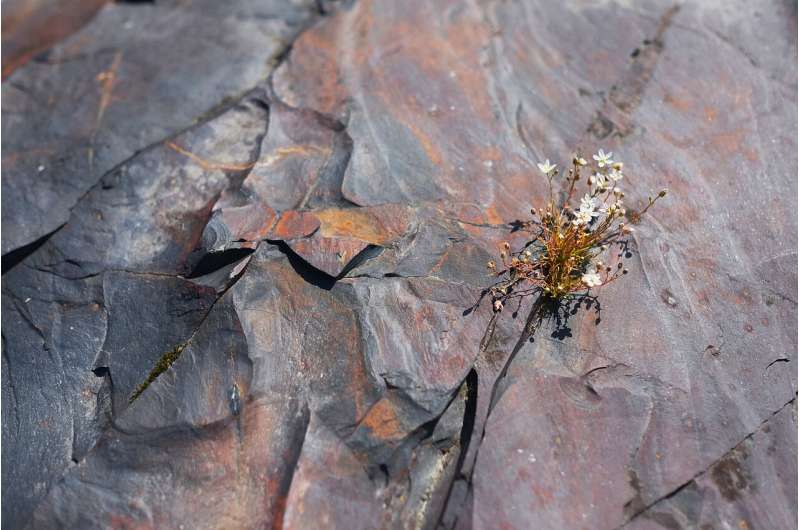Study challenges common view of oxygen scarcity on Earth 2 billion years ago

Shungite, a unique carbon-rich sedimentary rock from Russia deposited 2 billion years ago, holds clues about oxygen concentrations on Earth's surface at that time. Led by Professor Kurt Konhauser at the University of Alberta and Professor Kalle Kirsimäe at the University of Tartu, an international research team involving other colleagues from France, Norway, Russia, and USA, have found strikingly high molybdenum, uranium, and rhenium concentrations, as well as elevated uranium isotope ratios in drill cores that dissect the shungite rocks. These trace metals are only thought to be common in Earth's oceans and sediments when there is abundant oxygen around. The researchers found that such trace metal concentrations are unrivaled in early Earth's history, suggesting elevated levels of oxygen at the time when the shungite was deposited.
"What is puzzling is that the widely-accepted models of Earth's carbon and oxygen cycles predict that shungite should have been deposited at a time of rapid decrease in oxygen levels," says Mänd, a Ph.D. candidate at the University of Alberta and lead author of the study.
Most scientists agree that atmospheric oxygen levels significantly increased about 2.4 billion years ago—known as the Great Oxidation Event (GOE)—and reached about half of modern levels by about 2.1 billion years. The GOE was also accompanied by a shift in carbon isotope ratios in sedimentary rocks. To scientists, this fits the story—the anomalous carbon isotope ratios reflect the burial of massive amounts of plankton as organic matter in ocean sediments, which in turn lead to the generation of excess oxygen. But the prevailing understanding is that immediately after this period of high concentrations, oxygen levels decreased again and remained low for almost a billion years during Earth's so-called 'middle age.'
"Fresh drill cores that we obtained from the Lake Onega area with the support of the University of Tartu and Tallinn University of Technology provide some of the best rock archives to decipher the environmental conditions immediately after the GOE," says Kirsimäe, coordinator of geological field work.
"What we found contradicts the prevailing view—essentially we have clear evidence that atmospheric oxygen levels rose even further after the carbon isotope anomaly ended," says Mänd. "This will force the Earth science community to rethink what drove the carbon and oxygen cycles on the early Earth."
These new findings are also crucial for understanding the evolution of complex life. Earth's 'middle age' represents the backdrop for the appearance of eukaryotes. Eukaryotes, the precursors to all complex life, including animals such as ourselves, generally require high oxygen levels in their environment to thrive. This work now strengthens the suggestion that suitable conditions for the evolution of complex life on early Earth existed for a much longer time than previously thought. As such, the findings indirectly support earlier studies where Prof. Konhauser was involved that revealed large, potentially eukaryotic trace fossils as old as 2.1 billion years.
Despite these new advances, the delay between the initial rise of oxygen and the appearance and radiation of eukaryotes, remains an area of active research; one that University of Tartu and University of Alberta researchers are well positioned to help answer.
More information: Kaarel Mänd et al, Palaeoproterozoic oxygenated oceans following the Lomagundi–Jatuli Event, Nature Geoscience (2020). DOI: 10.1038/s41561-020-0558-5
Journal information: Nature Geoscience
Provided by Estonian Research Council



















